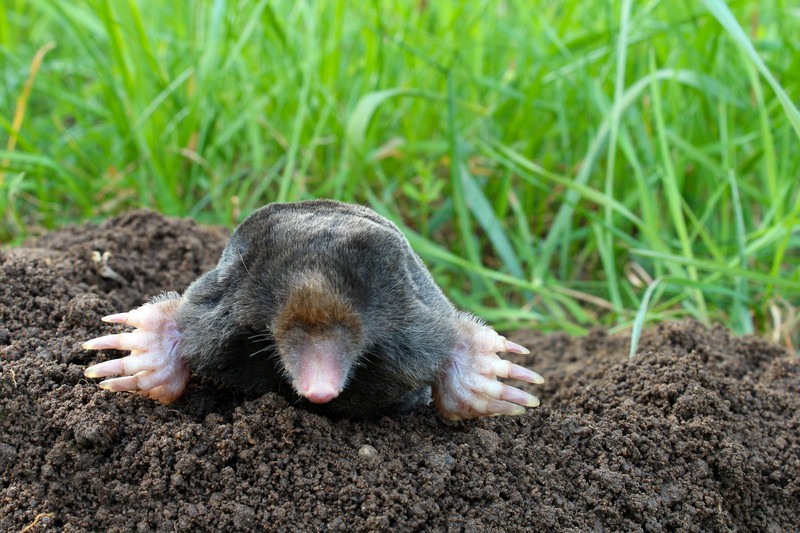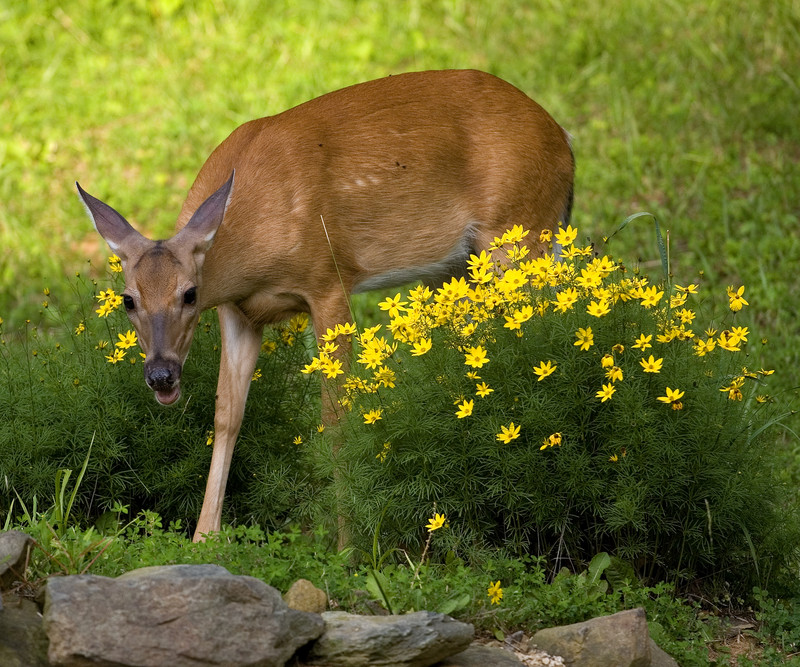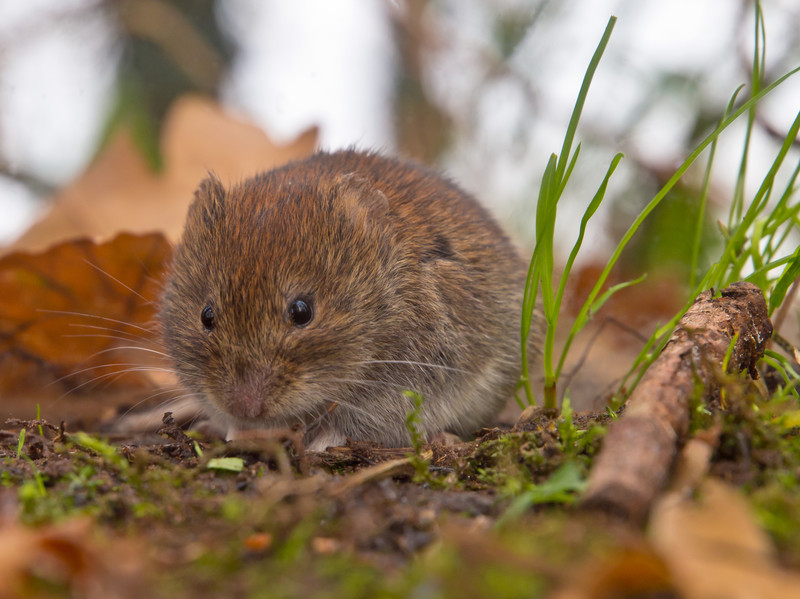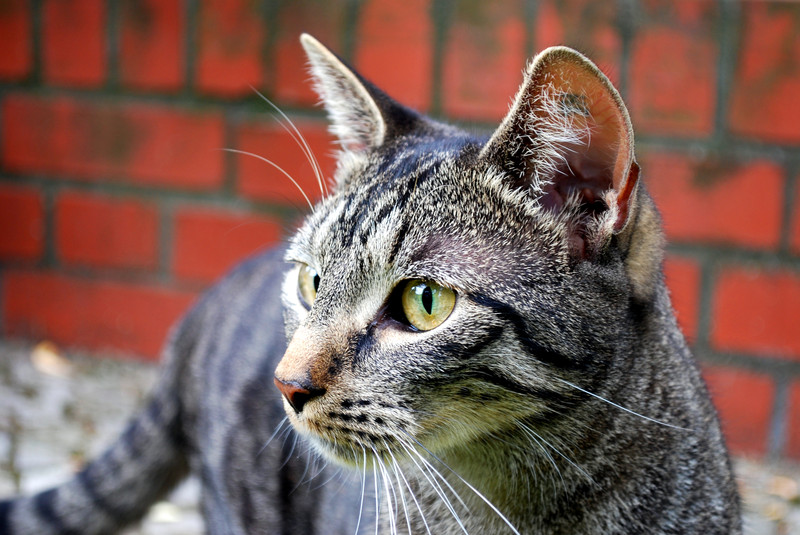Many gardeners want to make the garden attractive to animals–especially songbirds, hummingbirds, toads, lizards, frogs, and beneficial insects. But some animals can wreak havoc in a garden–especially those that feed on ornamental and edible plants.
The gardener should realistically expect that wildlife will visit the garden and that some plants will be damaged or lost. That said, there are ways to limit the damage and control wildlife.
Here are common garden wildlife visitors who at times can be considered pests, and here are ways to limit the damage.

Birds
Starlings, cowbirds, grackles, blackbirds, and crows are voracious feeders.
Target plants: Berries and high sugar level fruits.
Organic controls:
- Large plants such as blueberries: Create a frame around the plants or place posts at the corner of the planting bed; drape netting with ¾ inch mesh over the frame. Secure the bottom of the netting.
- Small plants such as strawberries: Cover small plants with wire cages or stretch ¾-inch mesh netting over the plants.
- Grapes and tree fruits: Tie paper bags over-ripening fruit; cut the bottom corners of the bags to allow for air circulation. This method is not advised in very hot weather; the temperature inside the bag may cook the fruit.
- Vegetables: Place lightweight floating row covers over seedbeds and planting beds; secure the edges. If crows or other birds get through the row cover, place chicken wire cages over seedlings. Place shiny aluminum foil steamers around the garden.

Rabbits
Target plants: Succulents plants and leaves with moderate to high water content.
Organic controls:
- Get rid of potential hiding places; tall grass, weeds, orchard clippings, woodpile.
- Create a 24-inch fence around the periphery of the garden; use chicken wire or plastic-coated wire fencing with a 1×2-inch mesh. Rabbits can burrow; extend the mesh at least 6 inches underground.
- Use 36-inch-wide wire mesh and fold out the bottom 12 inches around the periphery; stake down the horizontal portion to make it more difficult to dig or burrow under.
- Place plastic milk jugs with the bottoms and tops cut off or tin cans with the bottom and top cut off around seedlings and young plants.
- Sprinkle powdered phosphate rock around the garden; this can also be sprinkled on plants.
- Sprinkle dried blood around the garden.
- Interplant onions between rows of other crops.
- Plant soybeans near the garden to distract rabbits from other crops.
- Sprinkle plants with red cayenne pepper.
- Mothballs may repel rabbits.
- Hang cheesecloth pouches filled with human or dog hair in the garden.
- Box traps can be used to capture and relocate rabbits.
- Place a cloth or heavy paper wrapping or a wire mesh cylinder around tree trunks to keep rabbits from gnawing on bark.
- Spray with a commercial or homemade repellant. Here is a homemade repellant: Mix 2 eggs, 2 cloves of garlic, 2 tablespoons of hot chile pepper; 2 tablespoons of ammonia, and 2 cups of hot water; let the mix sit for two days, then paint it on fences and wherever animal pests go.

Gophers, moles, and woodchucks
Gophers: Have a thick body with small eyes and ears; they range in length from 6 to 12 inches; they have an excellent sense of smell; as many as 16 to 20 can live in an acre of land. Gophers push soil out of their hole creating fan-shaped mounds; gopher tunnels are about 2 inches in diameter.
Moles don’t eat plants but they do eat grubs, beetles, earthworms, and other soil dwellers. They can harm the root systems of young plants. They can spread disease from plant to plant. Moles are solitary animals. they make an extensive network of tunnels.
Woodchuck, also called groundhog, burrow through gardens eating plants. They pull young and old plants and eat them whole or in part.
Target plants: Roots of succulent plants and underground vegetable parts; also entire plants that are pulled down into their burrows. Moles do not eat vegetables; they eat grubs in lawns and elsewhere. Their tunneling disrupts roots.
Organic Controls:
- Dig planting bed to a depth of 2 feet, line it with ½-inch mesh chicken wire or galvanized hardware cloth, and replace the soil.
- Line individual planting holes with 1/2 -inch wire-mesh baskets.
- Place one trap at each tunnel exit and entry holes. Use box traps or Maccabee traps. Dig down to the main horizontal runway, as deep as 18 inches, place traps on each side of the digging hole. Bait the area with carrot tops or greens. Cover the hole with a board to block all light.
- Poison can be a danger to children, cats, and dogs. Place bait poison in the deep tunnels.
- Moles eat grubs in lawns; treat the lawn for grubs.
- Hang cheesecloth pouches filled with human or dog hair in the garden.

Raccoons
Target Plants: Vegetables, berries, and fruits; garbage; pest insects
Organic Controls:
- Keep the garden and yard free of raccoon-attracting food.
- Secure garage can lid with a locking device. Place a bright light on the garbage-can area.
- Bring pet food in at night.
- Keep the compost pile turned so that it remains hot so that fruit and kitchen remainders are composted quickly. Never throw meat or fish on the compost pile.
- Live traps baited with bread and honey or marshmallows.
- Spray with a commercial or homemade repellant. Here is a homemade repellant: Mix 2 eggs, 2 cloves of garlic, 2 tablespoons of hot chile pepper; 2 tablespoons of ammonia, and 2 cups of hot water; let the mix sit for two days, then paint it on fences and wherever animal pests go.

Deer
Target Plants: Flowers, roses, vegetable greens, fruit
Organic Controls:
- Fencing at least 8 feet tall.
- Deer fencing: a fence 6 feet tall with a 3-foot-wide section across the top that is parallel to the ground (deer cannot jump both high and wide).
- Hang bars of strong-smelling deodorant soap around the garden.
- Hang cheesecloth pouches filled with human or dog hair in the garden.
- Place cotton clothes spring with baby powder in the garden.
- Plant castor oil plants in the garden (but castor oil is poisonous to humans and animals).
- Plant catnip, garlic, lavender, onions, spearmint, thyme, and yarrow around the garden; the smell is repellant.

Rats, mice, and voles
Target Plants: Vegetables, fruits, garden debris, composted materials.
Organic Controls:
- Mulch after the first frost; rodents will hide or burrow under mulch before the first frost.
- Keep the garden and yard free of debris including trash, leaves, firewood, newspapers, boxes, pipes, logs, and tree cuttings.
- Clean out and close off areas under steps and around foundations.
- Hang cheesecloth pouches filled with human or dog hair in the garden.
- Place snap traps on rodent runs; bait the traps with sunflowers or peanut butter.
- Spray with a commercial or homemade repellant. Here is a homemade repellant: Mix 2 eggs, 2 cloves of garlic, 2 tablespoons of hot chile pepper; 2 tablespoons of ammonia, and 2 cups of hot water; let the mix sit for two days, then paint it on fences and wherever animal pests go.

Squirrels
Target Plants: Vegetables, roots, and tubers
Organic Controls:
- Place live box traps outside burrows. Peanut butter is an effective bait. Release squirrels in an area where they will not do damage.
- Spray with a commercial or homemade repellant. Here is a homemade repellant: Mix 2 eggs, 2 cloves of garlic, 2 tablespoons of hot chile pepper; 2 tablespoons of ammonia, and 2 cups of hot water; let the mix sit for two days, then paint it on fences and wherever animal pests go.

Cats and dogs
Organic Controls:
- Fencing around planting beds.
- Spray with a commercial or homemade repellant. Here is a homemade repellant: Mix 2 eggs, 2 cloves of garlic, 2 tablespoons of hot chile pepper; 2 tablespoons of ammonia, and 2 cups of hot water; let the mix sit for two days, then paint it on fences and wherever animal pests go.
- Cats can be distracted by planting catnip in a separate part of the garden.
- Citrus peels can be placed near plants; the strong odor may repel cats and dogs.















